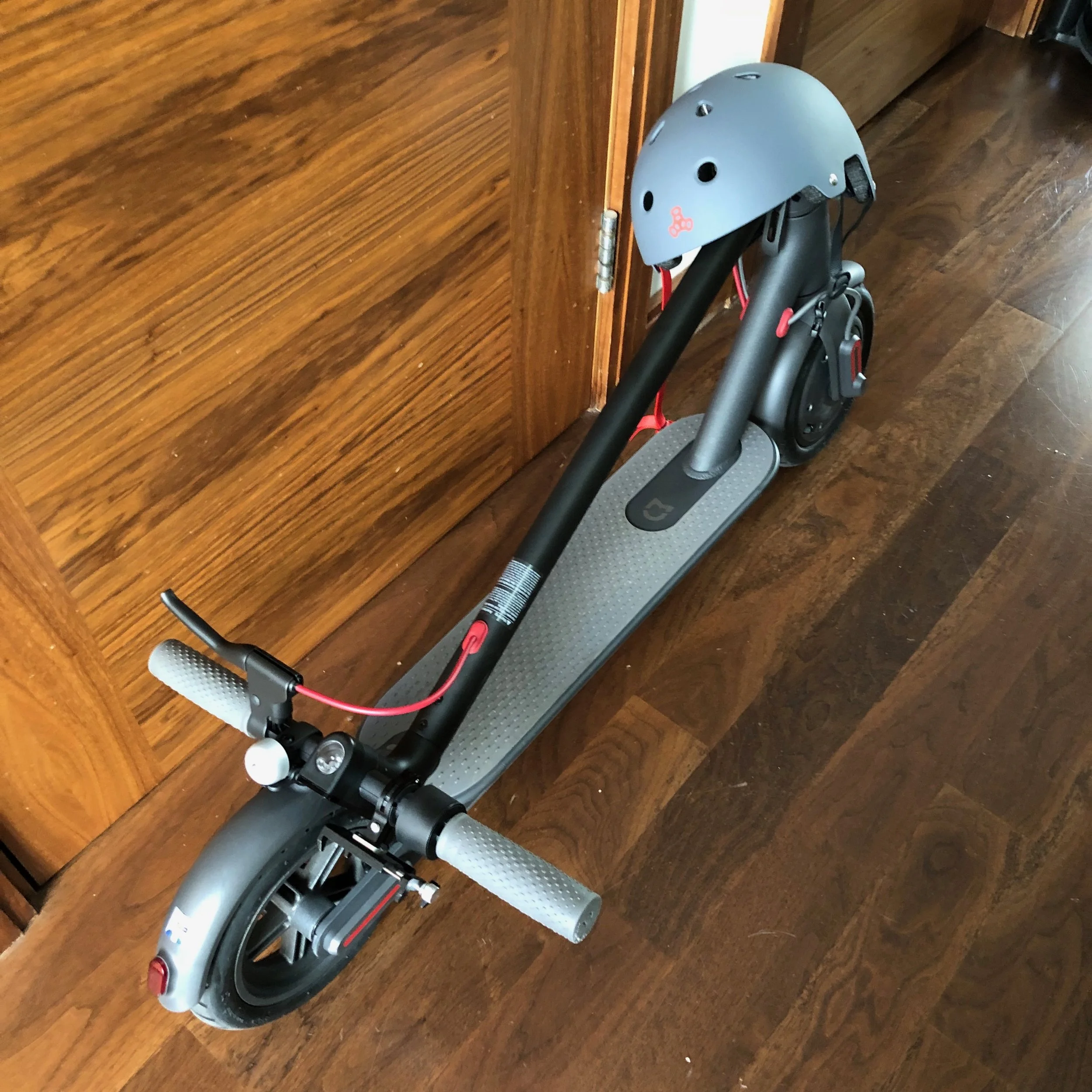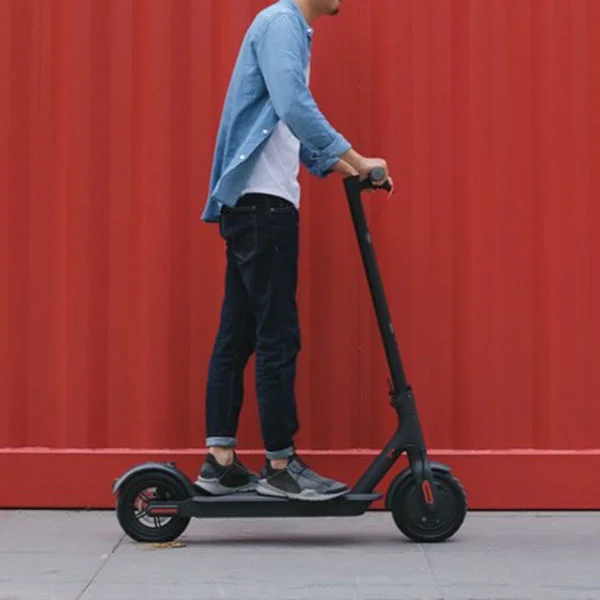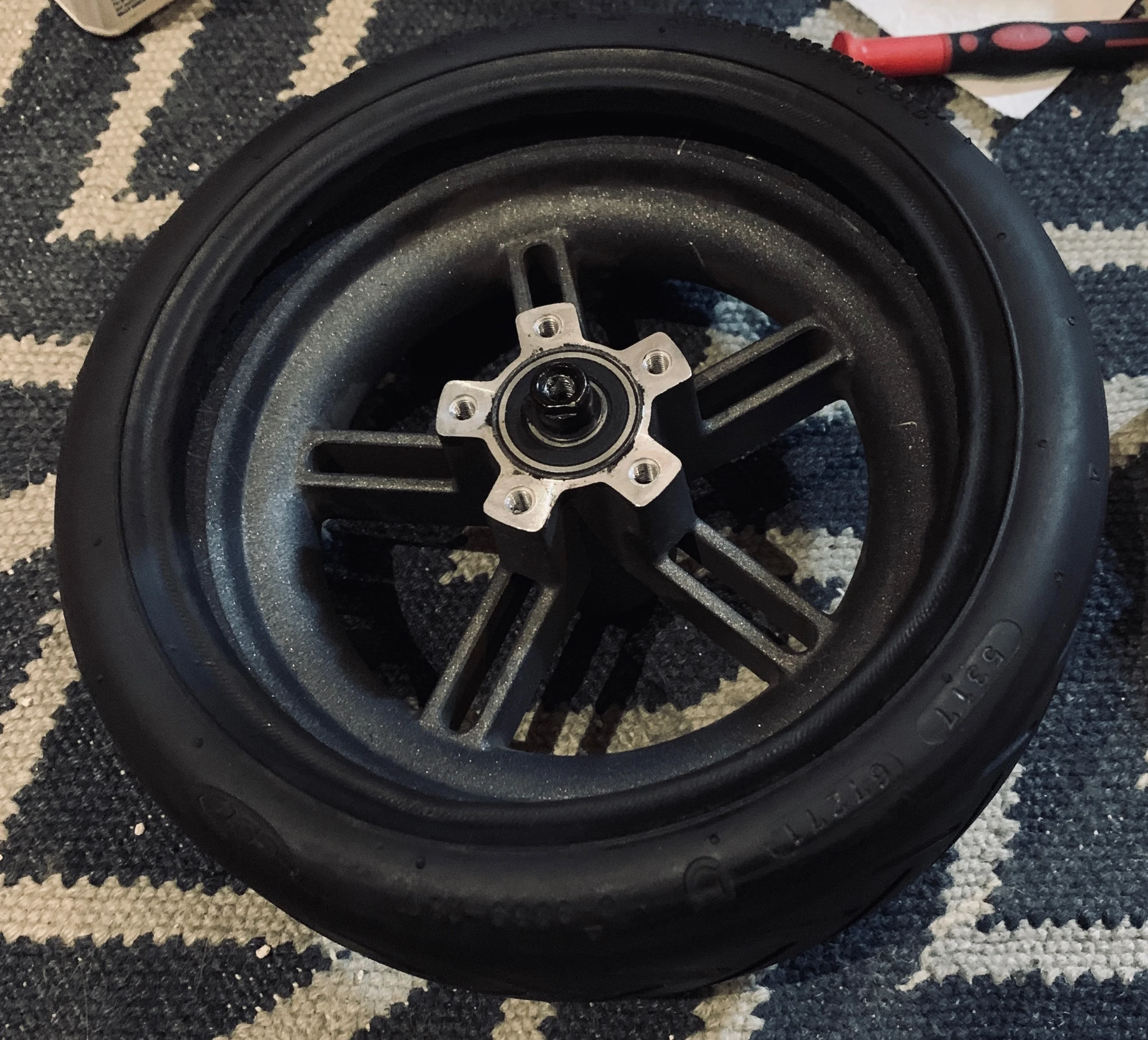Apparently it's called micro-transportation - 1/5
Starting with why
I live about 4km away from my place of work. To get there each work day I could take a bus (which takes about 30 minutes in decent traffic, including a short walk both ends), I could take the tube (about 35 minutes and packed like a sardine in a tin during the main commuting hours) or I could walk (about 50 minutes). I don’t own a car and parking in central London is hardly economical anyway.
It usually takes me about 12 minutes to get to work, regardless of traffic, weather or how many other people are trying to do the same thing. I ride an electric scooter each day.
Regardless of what you’ve read in the media about electric scooters, either as the future of transportation or as an urban menace, this post, and it’s follow ups, intend to clear up some of that misreporting and reflect on the actual experience of riding one regularly in a busy city.
The scooter itself
There are several models of electric scooter available, all built in China. You might remember, or have experienced, the Segway. You can read all about the vicissitudes of Segway here, but for now suffice to know they found a Chinese company called Ninebot building devices they believed violated their patents and sued them. Ninebot resolved this in a fairly novel way by buying Segway. Ninebot make some models of electric scooters themselves and also make hardware for other people.
My scooter is the Mi M365 by Xiaomi. You may be more familiar with Xiaomi as a maker of smartphones, tablets and home automation devices. Indeed the M365 is made for Xiaomi by Ninebot. The M365 is made of pretty sturdy aluminium and weighs about 12Kg. It has a 250W motor and a 280W battery pack to run it.
Fresh out of the box
It has Bluetooth™ connectivity to Xiaomi’s Home automation app, which is a little weird but it’s perfectly usable and gives you access to a live speedometer screen, information about the scooter and distance covered, battery health and a way to update to new firmware. More details and specs here.
Interface for the scooter in the Xiaomi Mi Home app
The price of these scooters is dropping over time. I paid £385 for mine, and at the time had seen them on Amazon for £70+, now they are less than £400. One of the difficulties in getting them in the UK was the very long shipping time, usually 2-3 months. This was simply a factor of the size of the battery being above the limit for air freight so they’d have to come by sea.
From the practical side of riding it, it has a very bright front light, a reasonably good rear light, a battery charge indicator, manual and ABS braking and an energy recovery system. The whole thing folds down with a hinge at the bottom of the handlebar yoke for storage and carrying.
It tops out at around 26 kph on the level (though I’ve managed 30 kph downhill with a prevailing breeze behind me. Range is around 30-35 km, more if you’re careful. You can enable an economy mode which limits the top speed and available power and this is enabled automatically when you get to about 40% of the battery charge.
How
Friends who have the same scooter have different ways of riding them. Some prefer to stick to the pavement, some will ride on the road, some a mix of both. I prefer to stick to the road solely, I never liked people riding bikes on the pavement, that’s for pedestrians, and scooters would be worse. Additionally I prefer to use properly marked cycle ways or at least routes where drivers are used to cyclists being a part of their environment, for safety’s sake. In the future I’ll talk more about this and about my experience on the road.
In the next part, I’ll talk about setting up the scooter before riding it for the first time and what maintenance I’ve had to do from the last 10 months of riding almost daily.






